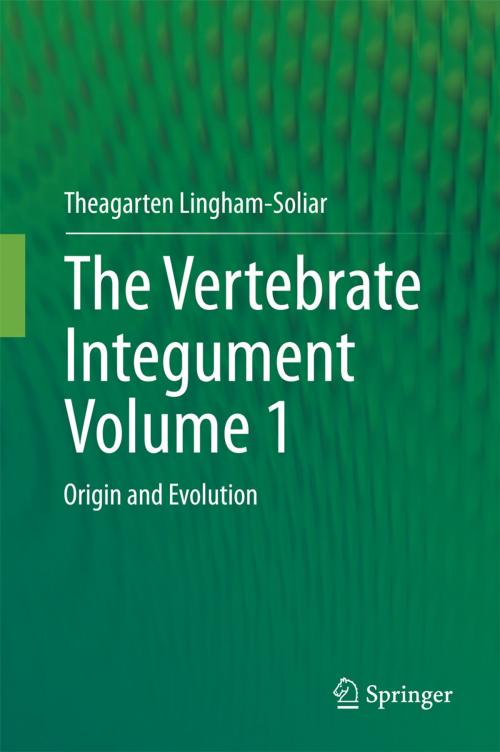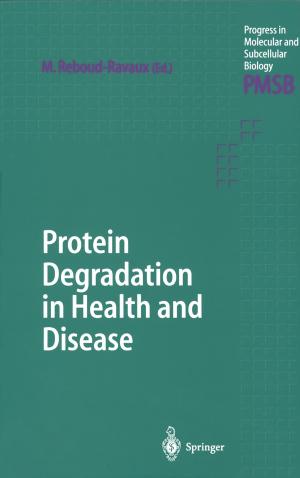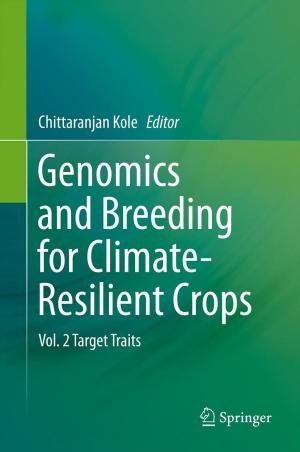The Vertebrate IntegumentVolume 1
Origin and Evolution
Nonfiction, Science & Nature, Science, Biological Sciences, Zoology, Evolution| Author: | Theagarten Lingham-Soliar | ISBN: | 9783642537486 |
| Publisher: | Springer Berlin Heidelberg | Publication: | February 18, 2014 |
| Imprint: | Springer | Language: | English |
| Author: | Theagarten Lingham-Soliar |
| ISBN: | 9783642537486 |
| Publisher: | Springer Berlin Heidelberg |
| Publication: | February 18, 2014 |
| Imprint: | Springer |
| Language: | English |
The vertebrate integument arose about 450 million years ago as an ‘armour’ of dermal bony plates in small, jawless fish-like creatures, informally known as the ostracoderms. This book reviews the major changes that have occurred in the vertebrate integument from its beginnings to the present day. Critical questions concerning the origin, structure and functional biology of the bony integument are discussed and intrinsically linked to major steps in vertebrate evolution and phylogeny—the origin of jaws and the origin of teeth. The discussions include the origins of mineralization of major vertebrate skeletal components such as the dermatocranium, branchial arches and vertebral column. The advances that led to the origin of modern fishes and their phylogenetic development are reviewed and include the evolution of fins and replacement of the bony plates with several types of dermal scales. The evolution of reptiles saw a major transformation of the integument, with the epidermis becoming the protective outermost layer, from which the scales arose, while the dermis lay below it. The biological significance of the newly-evolved β-keratin in reptilian scales, among the toughest natural materials known, is discussed in the context of its major contribution to the great success of reptiles and to the evolution of feathers and avian flight. The dermis in many vertebrates is strengthened by layers of oppositely oriented cross-fibres, now firmly entrenched as a design principle of biomechanics. Throughout the book conventional ideas are discussed and a number of new hypotheses are presented in light of the latest developments. The long evolutionary history of vertebrates indicates that the significance of the Darwinian concept of “survival of the fittest” may be overstated, including in our own mammalian origins and that chance often plays a major role in evolutionary patterns. Extensive illustrations are included to support the verbal descriptions.
Professor Theagarten Lingham-Soliar is in the Department of Life Sciences at the University of KwaZulu-Natal.
The vertebrate integument arose about 450 million years ago as an ‘armour’ of dermal bony plates in small, jawless fish-like creatures, informally known as the ostracoderms. This book reviews the major changes that have occurred in the vertebrate integument from its beginnings to the present day. Critical questions concerning the origin, structure and functional biology of the bony integument are discussed and intrinsically linked to major steps in vertebrate evolution and phylogeny—the origin of jaws and the origin of teeth. The discussions include the origins of mineralization of major vertebrate skeletal components such as the dermatocranium, branchial arches and vertebral column. The advances that led to the origin of modern fishes and their phylogenetic development are reviewed and include the evolution of fins and replacement of the bony plates with several types of dermal scales. The evolution of reptiles saw a major transformation of the integument, with the epidermis becoming the protective outermost layer, from which the scales arose, while the dermis lay below it. The biological significance of the newly-evolved β-keratin in reptilian scales, among the toughest natural materials known, is discussed in the context of its major contribution to the great success of reptiles and to the evolution of feathers and avian flight. The dermis in many vertebrates is strengthened by layers of oppositely oriented cross-fibres, now firmly entrenched as a design principle of biomechanics. Throughout the book conventional ideas are discussed and a number of new hypotheses are presented in light of the latest developments. The long evolutionary history of vertebrates indicates that the significance of the Darwinian concept of “survival of the fittest” may be overstated, including in our own mammalian origins and that chance often plays a major role in evolutionary patterns. Extensive illustrations are included to support the verbal descriptions.
Professor Theagarten Lingham-Soliar is in the Department of Life Sciences at the University of KwaZulu-Natal.















